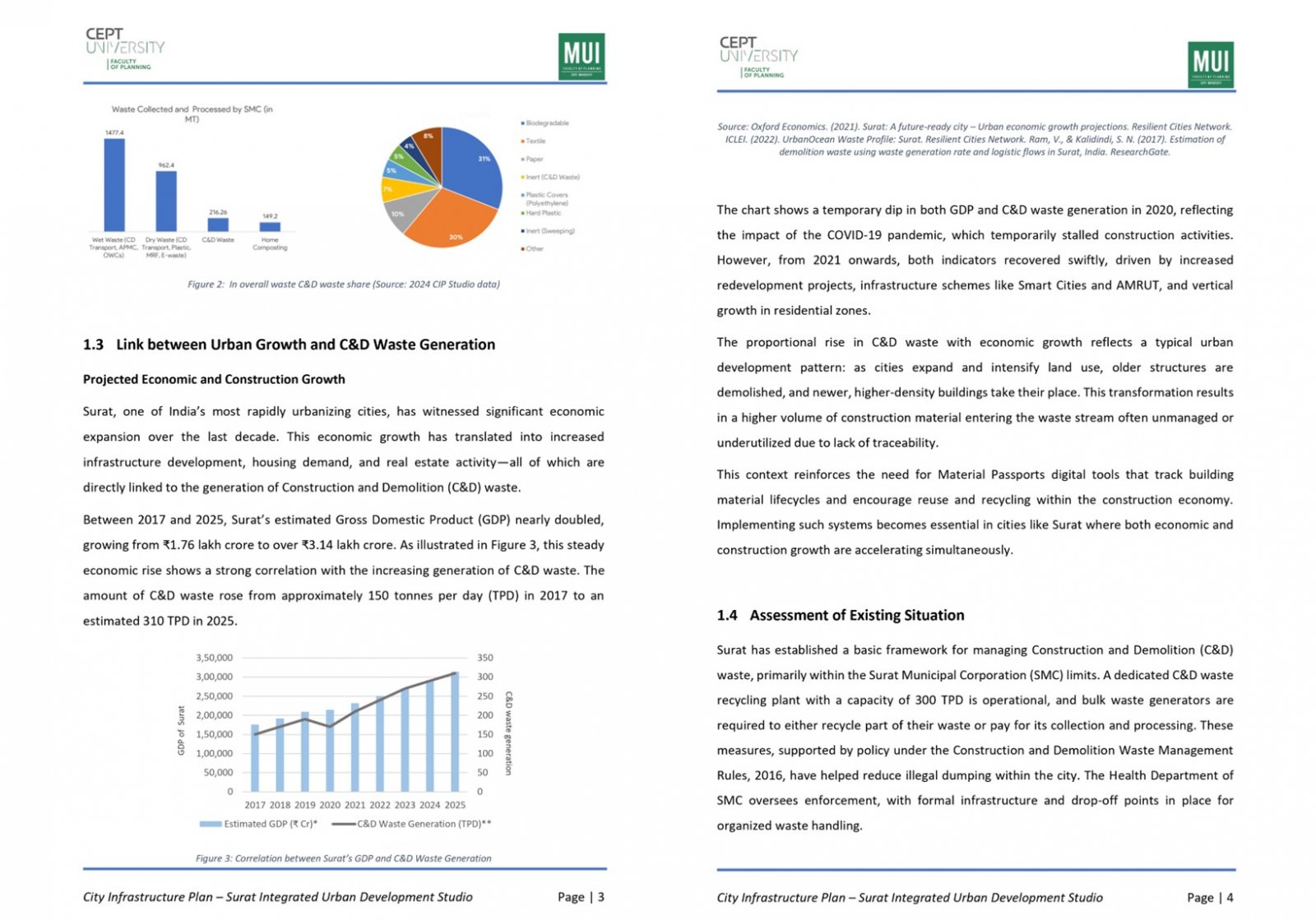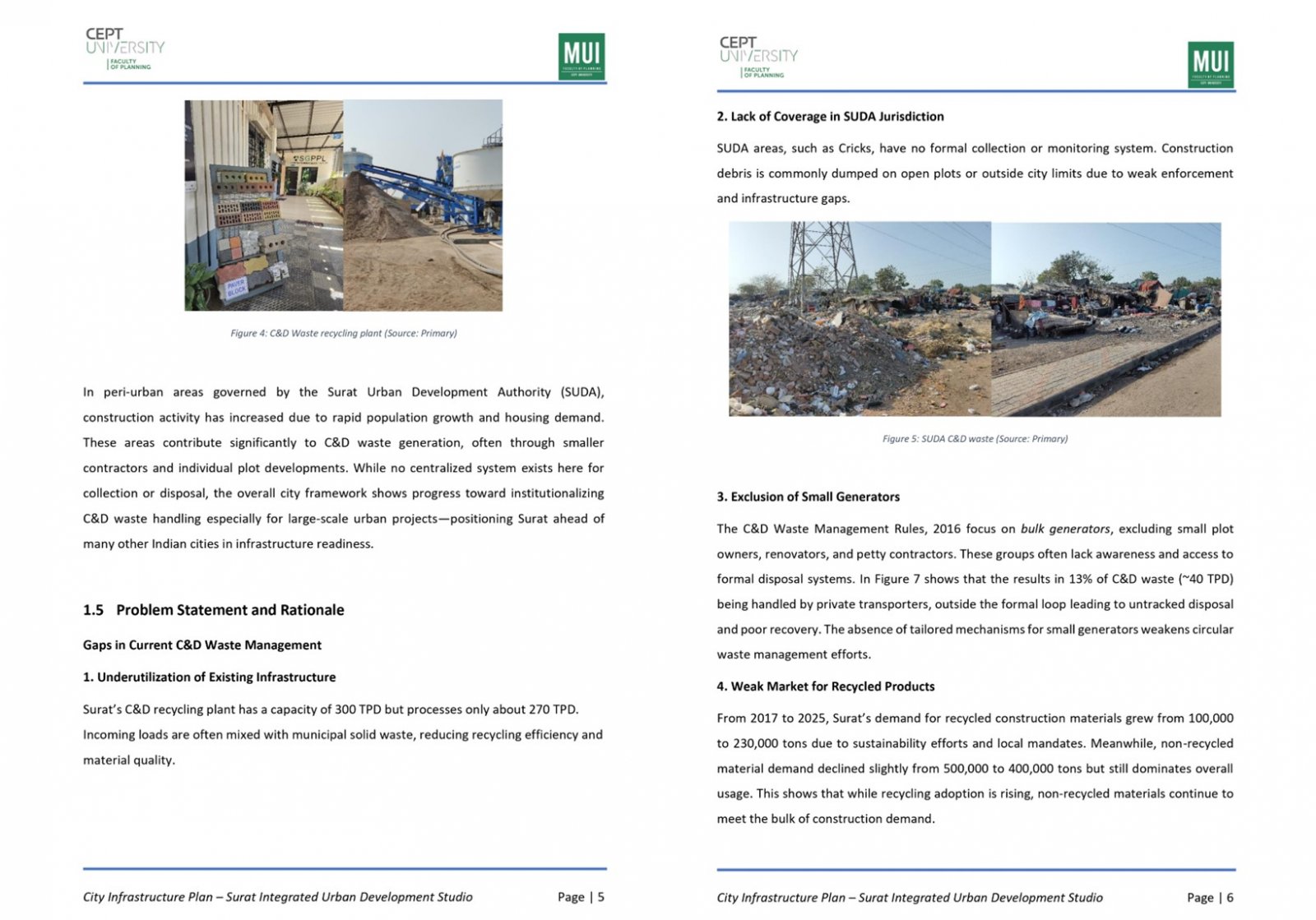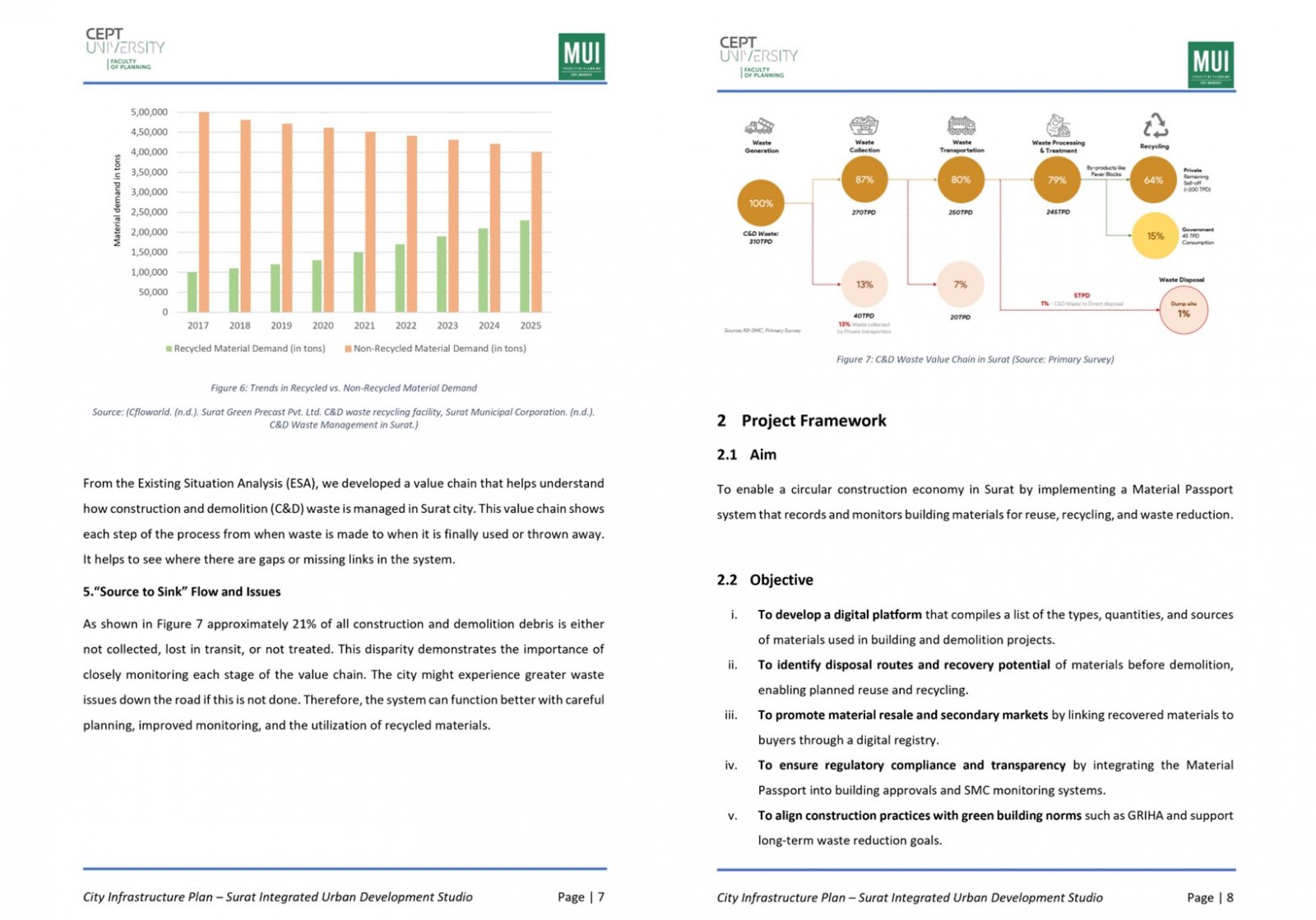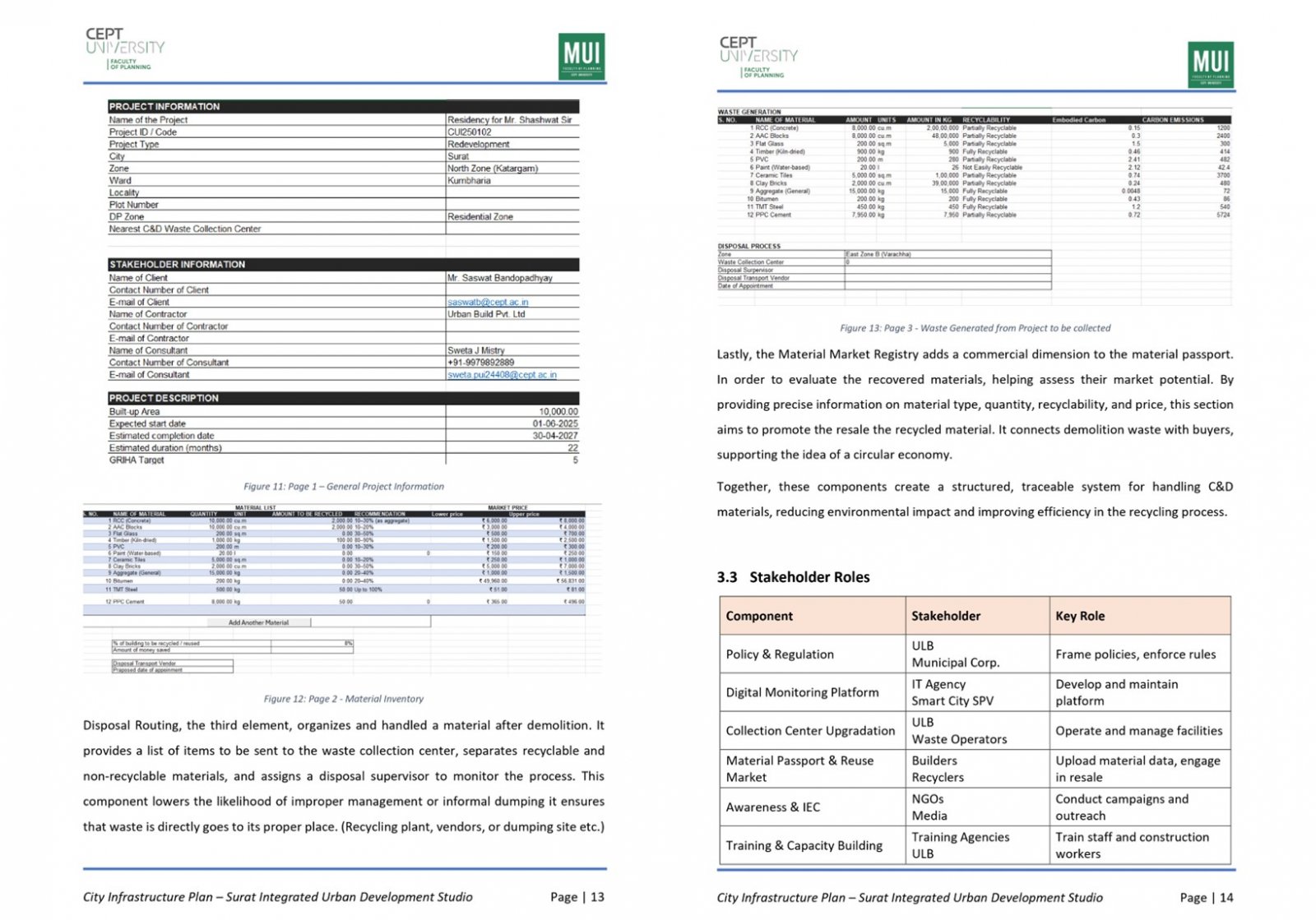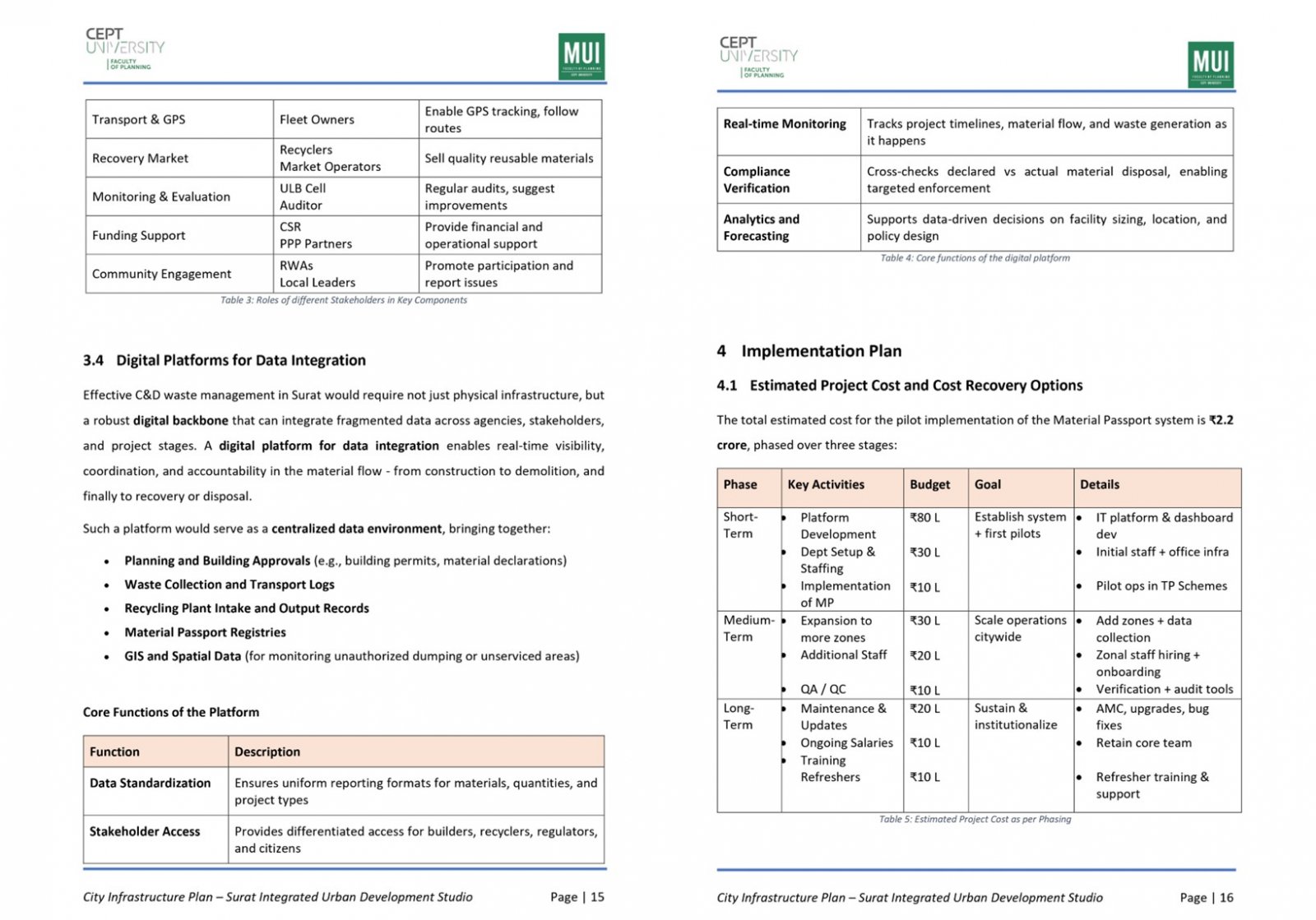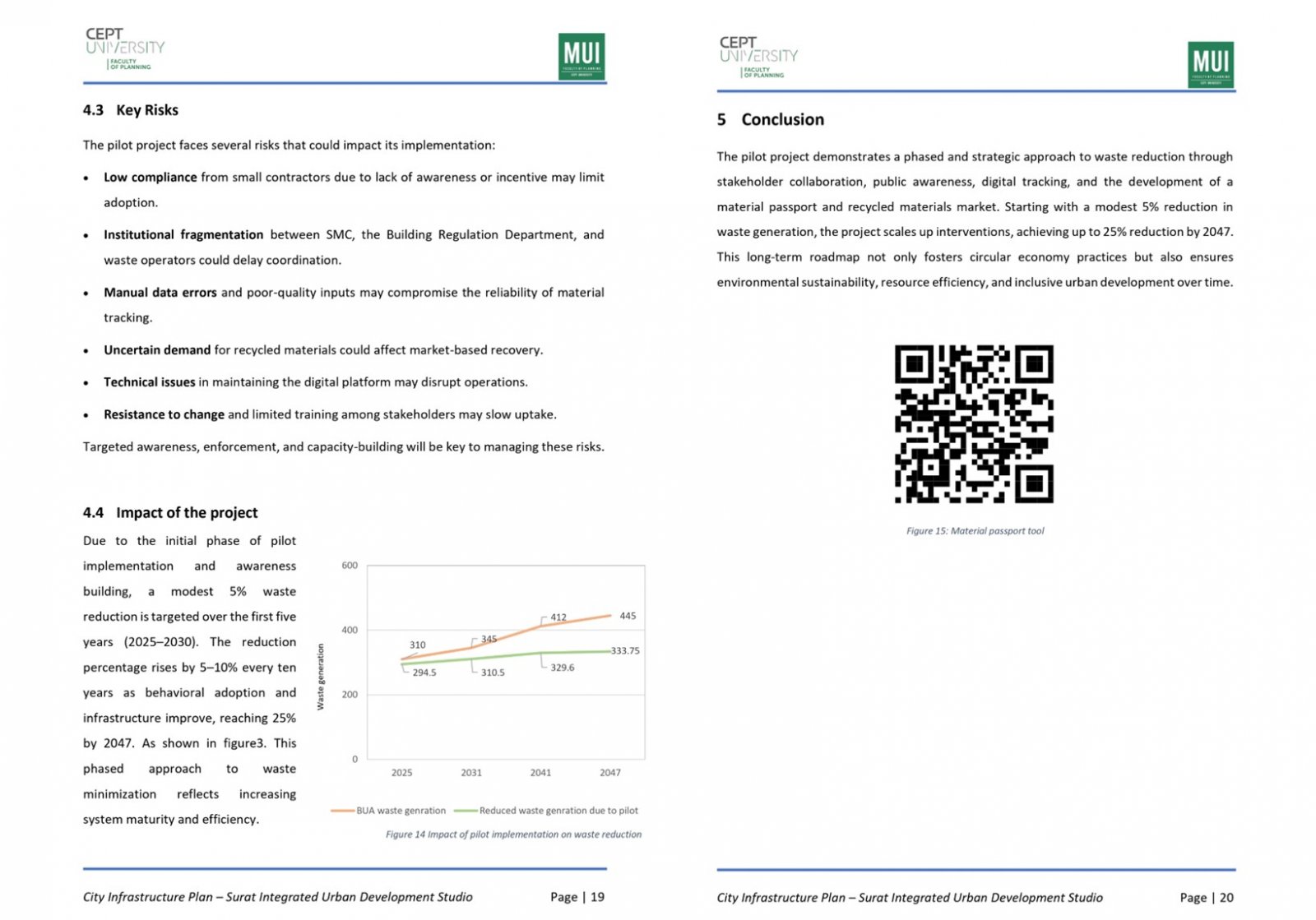Your browser is out-of-date!
For a richer surfing experience on our website, please update your browser. Update my browser now!
For a richer surfing experience on our website, please update your browser. Update my browser now!
Surat, one of India’s fastest-growing cities, faces mounting challenges in managing Construction and Demolition (C&D) waste due to rapid urban redevelopment and infrastructure expansion. Despite being a Smart City and having a designated C&D waste processing facility with a capacity of 300 tonnes per day, Surat generates over 310 TPD of C&D waste daily, of which only 270 TPD is collected. This gap indicates that a large share is either unsegregated or illegally dumped due to poor on-site inventory and tracking. Current systems lack transparency in material flows, reuse potential, and emissions accounting. A Material Passport system can bridge this gap by digitally cataloguing material types, quantities, recyclability, embodied carbon, and resale values at the project level. By doing so, it enables traceability, regulatory compliance, early planning for circularity, and market development for secondary materials ultimately turning the city’s waste burden into a circular economy opportunity.
View Additional Work
